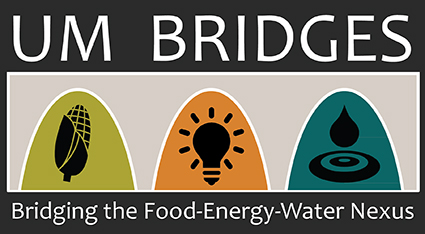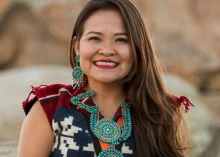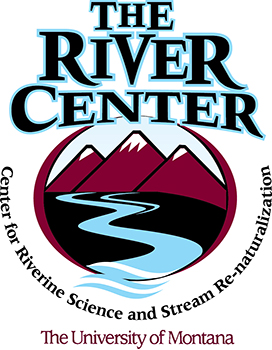
University of Arizona INFEWS NRT Director challenges AGU to include indigenous perspectives in science

Dr. Karletta Chief, Associate Professor and Extension Specialist in Hydrology and the University of Arizona, issued the following challenge to the American Geophysical Union in honor of Native American Heritage Month
In honor of National Native American Heritage Month and as a Native American Earth scientist, I honor the resiliency of Native Americans to maintain their deep rooted beliefs, cultures, and languages. I respect the passion of Native peoples to fight for the protection of their land. I honor the sovereignty of Native American tribes. I celebrate scientists who work in Indigenous-led community-engaged research. I pay tribute to the academic journeys of Native Americans students in Earth and planetary sciences and their commitment to do research with their tribes and I express my gratitude to the mentors of Native American students in Earth and planetary sciences.
November is National Native American Heritage Month and was designated by President George H.W. Bush in 1990. Efforts to recognize and celebrate Native American peoples and cultures began as far back as 1915 by Native American leaders including Dr. Arthur C. Parker (Seneca), the Congress of the American Indian Association, and Red Fox James (Blackfoot). Red Fox traveled from state to state on horseback gathering endorsements to designate a day to honor Native Americans. Today, there are 6.7 million census-identified Native Americans in the United States (U.S. Census, 2016), 573 federally recognized tribes (Federal Register, 2018), many state recognized tribes, and numerous unrecognized Indigenous communities (National Conference of State Legislatures, 2017). National Native American Heritage Month is a month for all Americans to celebrate and honor the culture and contributions of Native Americans in the U.S. who are incredibly diverse and unique in their culture, language and traditions.
Sharing from one tribal perspective of the hundreds is my own tribe, the Navajo Nation. “The Earth is our mother and the Sky is our father.” This is a statement I repeatedly hear in the prayers of the Diné (Navajo) People. The elaborate prayers in the complex Diné language would go on for a lengthy period of time acknowledging every element, direction, sacred landscape and natural deities residing on Mother Earth and within the constellations. Unlike AGU’s mission to promote discovery in Earth and space sciences for the benefit of humanity, the Diné people believe in maintaining hózhó or balance with all elements and parts of the natural world not for the benefit of man but for benefit of all living things. This holistic view of nature reveals a “Native Science” of time immemorial built upon deep beliefs and connection to the natural environment, and thousands of years of Earth observations passed down through generations via songs, prayers, culture, oral stories, and other means of transmission.
Indigenous voices in science have been absent for hundreds of years and are nominal today. Although Indigenous knowledge systems have long contributed to scientific and technological innovations, they have only recently received formal recognition as valid science and data in Western science (Redsteer et al., 2012; Huntington, 2002). Western science is making an effort to put the human back into science (Sivapalan, 2012). Although, Native Americans make up only 2% of the U.S. population, Native Americans have been at the forefront of challenging the world to maintain the delicate balance of Mother Earth.
One may wonder why the Water Protectors stood at the frontlines of NoDAPL (No Dakota Access Pipeline) protecting their Indigenous territories and waters from being contaminated by an oil pipeline or wonder what the term “Mni Wiconi” or “Water is Life” means. Native Americans and Water Protectors stand up to protect their lands because of their beliefs, culture, identity, and prayers that value balance with their environment.
I have met many Native American students (K-12 and college) who want to study Earth and planetary sciences because of their deep connection to the environment. Many of these students share similar passions as I do, to work with tribal communities to address environmental challenges. However, retention of Native Americans in college is a big challenge and the rate of Native Americans in college and Earth sciences is extremely low. There is a huge opportunity for AGU members to mentor Native American students to pursue higher degrees in Earth sciences, particularly to foster and support opportunities for students to conduct research or outreach in their own tribal communities. As a mentors to Native American students, it is important to be informed of Native American history in the United States, which includes horrific and ongoing colonization and assimilation practices by the federal government that also manifest as intergenerational trauma. Students face many barriers and often carry large cultural, family, and community responsibilities. A good mentor to a Native American student would understand this journey and guide students step by step, up the ladder of education while being their biggest advocate. Native American students can also succeed by being inspired by successful Native Americans in the sciences like the first Native American Astronaut, Dr. John Herrington. AGU can play a role in this by equal recognition and inclusion of America’s First Peoples and the role of science in Indigenous communities on their national platform.
There is also a great opportunity for AGU members and society to be educated and enlightened on the role of science in Indigenous communities and to understand the importance for the inclusion of Indigenous communities in science in an equitable community engaged and indigenous-led approach where indigenous people are involved in the research process from the formulation of the research question to the analysis and dissemination of the data. Engaging in Earth science research with Native American communities requires researchers to seek tribal research approvals and engage with Indigenous data governance protocols (Davis and Reid, 1999; David-Chavez, 2018; Chief et al., 2016).
Recently, Native Science and Indigenous oriented sessions have been introduced to AGU and the Indigenous AGU Collaborative Network was created. The inaugural session, “Native Science: How Indigenous Perspectives Inform Environmental Science and Policy,” was held at AGU 2017. The AGU 2018 Native Science session will focus on action, “Native Science to Action: How Indigenous Perspectives Inform, Diversify, and Build Capacity in Environmental Science and Policy.” Additionally, the Indigenous AGU Collective effort is hosting at least seven Indigenous sessions and a networking reception (More info here).
More Indigenous AGU members are actively involved in and leading the science happening in their communities. Native science and engineering networks exist across the U.S., for example Geoscience Alliance (Broadening Participation of Native Americans in Geoscience, geosciencealliance.wordpress.com) and the American Indian Science and Engineering Society (AISES; aises.org). AGU has the opportunity to tap into these existing networks to focus on increasing the number of Native American students, scientists, and researchers in Earth and planetary sciences. However, AGU’s mission to be inclusive, diverse, and understanding will only occur if AGU members at large participate in and attend these sessions and give space to Indigenous perspectives in science.
So in honor of National Native American Heritage Month, I challenge each AGU member to attend an AGU 2018 Indigenous session and to consider mentoring a Native American student in Earth and planetary sciences. Indigenous knowledge and perspectives brings a diverse understanding in science that can lead to solving some of the most pressing environmental challenges facing Mother Earth and Father Sky today.

